Does your beautiful vaulted ceiling feel more vast and cold than dramatic and cozy? You’re not alone. That grand scale often lacks the warmth and character that make a house a home.
So, how can you add the timeless appeal of wooden beams without the massive cost, weight, and construction headache of structural timber? The answer lies in the smart, stylish solution of faux beams.
Made from lightweight materials like high-density polyurethane or engineered wood, faux beams are a highly sought-after feature, capable of transforming spaces from a farmhouse in Texas to a modern loft in New York.
The best part? The average cost to install them generally falls between $1,500 and $4,000 for a medium-to-large project, making them a budget-friendly option compared to heavy, reclaimed wood. Meanwhile you can also read guide on cheap wood ceiling for your house.
Faux Beam Design Ideas for Vaulted Ceilings
The height of a vaulted ceiling is your canvas. Here are 18 unique ways to use faux beams to transform your space, broken down by style and pattern.
Classic & Rustic Styles (Farmhouse and Lodge)
The Simple Ridge Beam
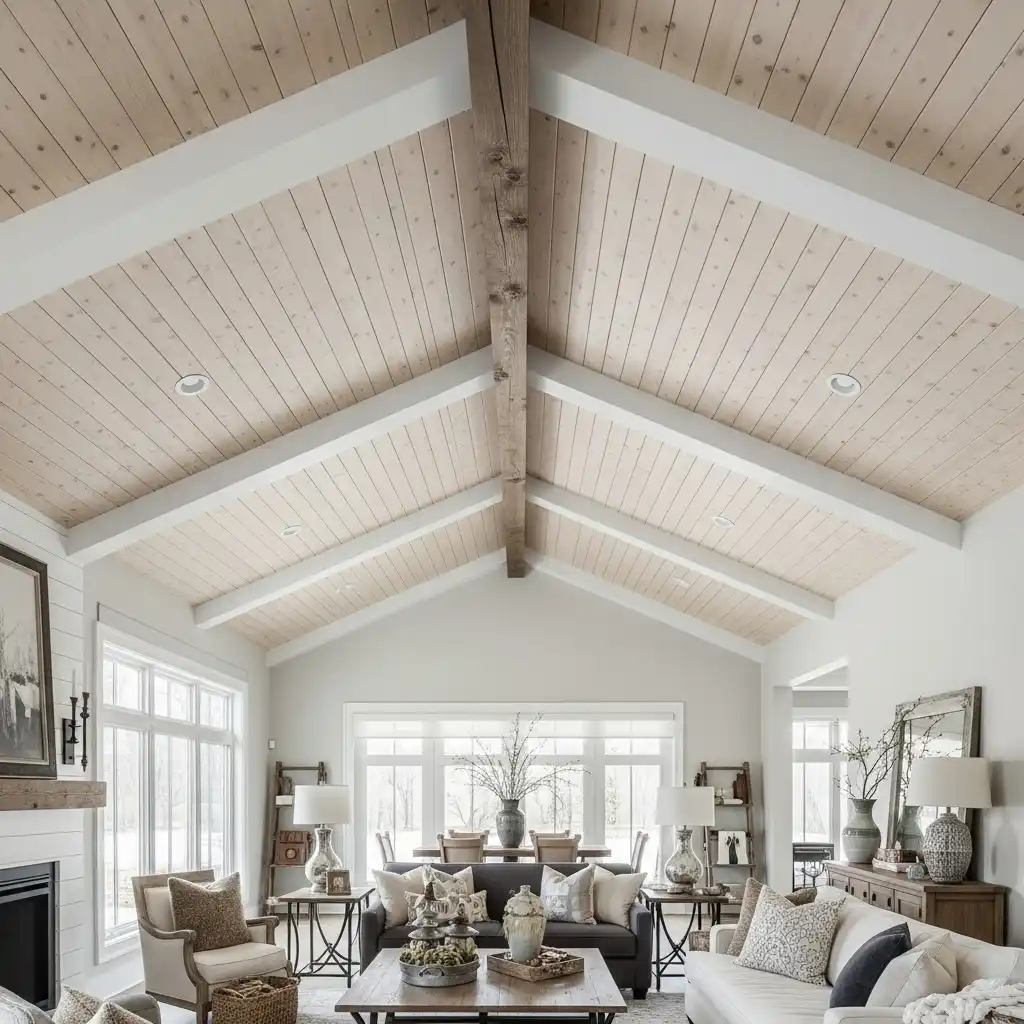
Install a single, thick beam along the ceiling apex (ridge). This clean, prominent line anchors the high space and is a hallmark of modern farmhouse design.
Weathered & Hand-Hewn
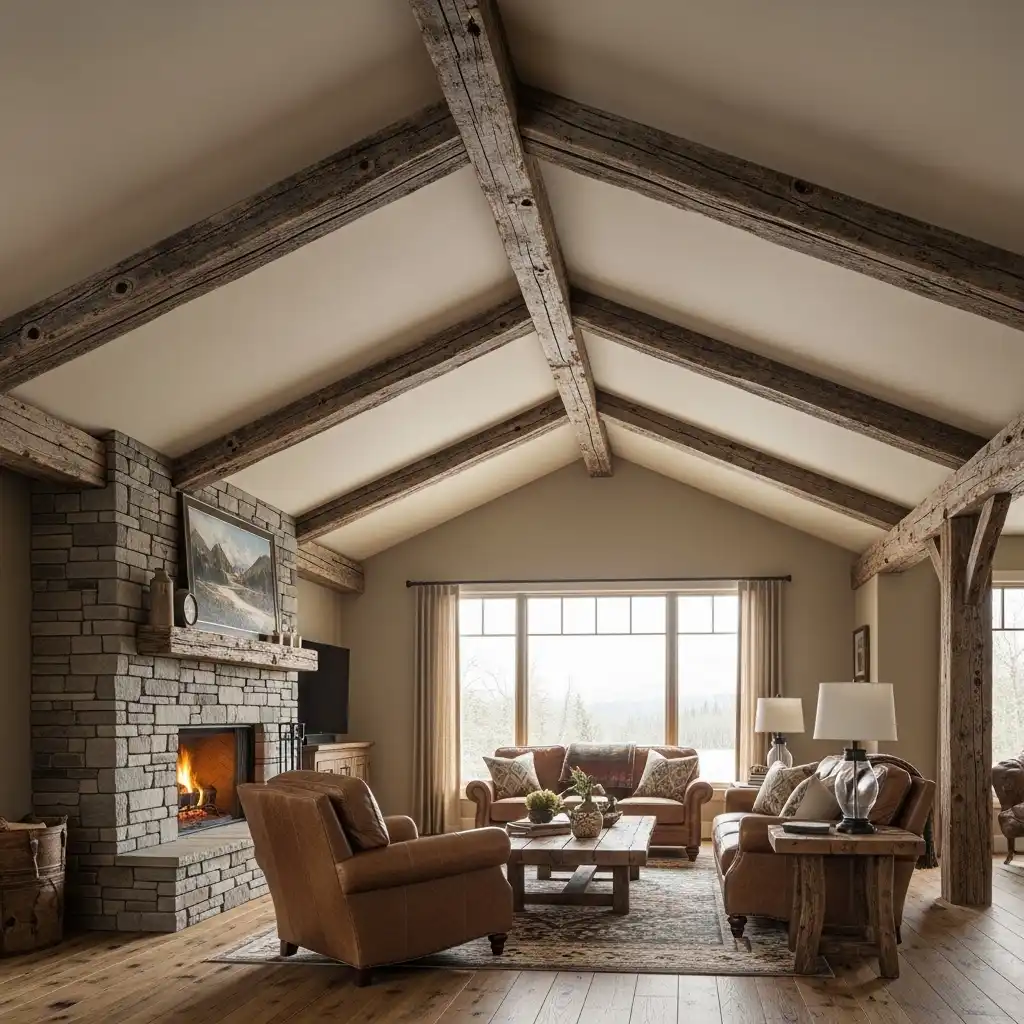
Choose a deeply textured, distressed finish to simulate old, rustic barn wood. This is perfect for a cozy, cabin-like feel, often seen in homes near Denver.
Contrasting White Shiplap
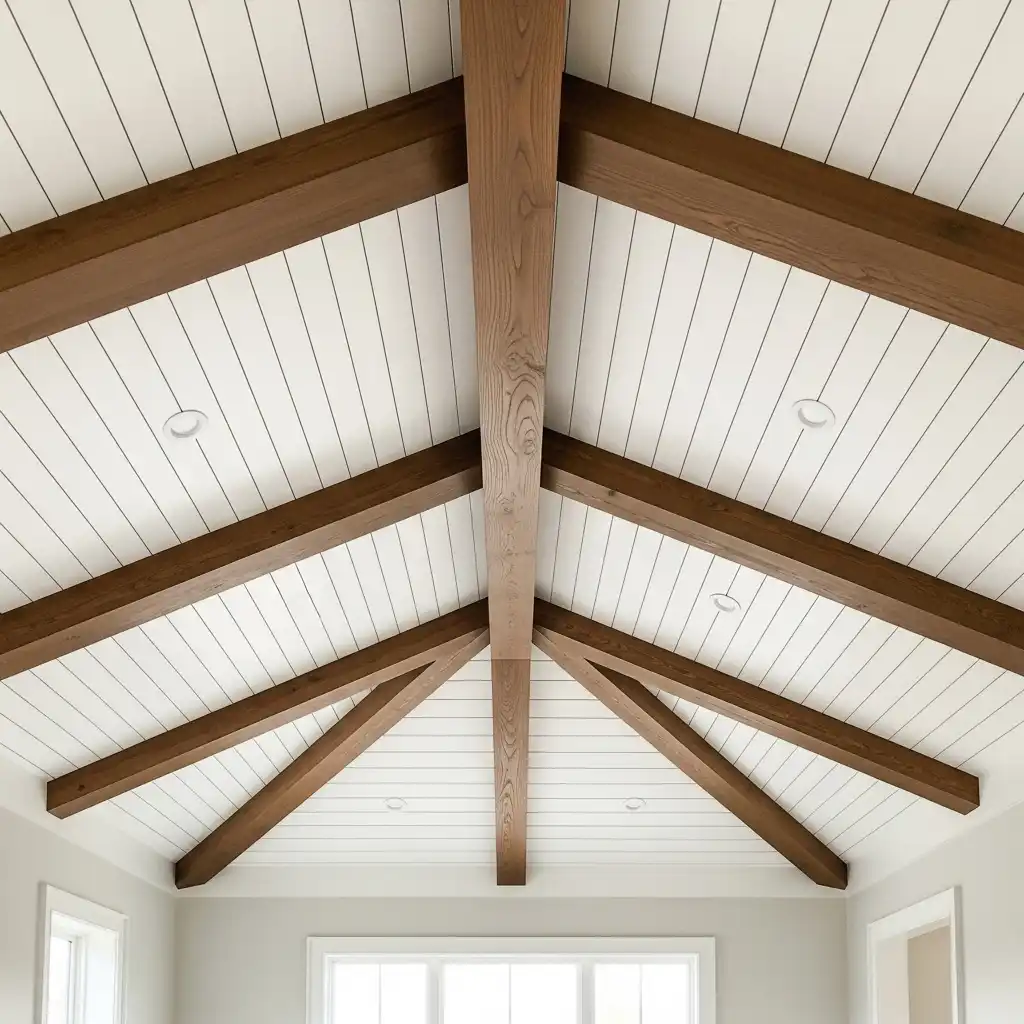
Place richly-stained dark brown beams against a white shiplap or painted ceiling. The contrast emphasizes the architectural lines and creates a bright, airy farmhouse look.
Collar Ties/Trusses
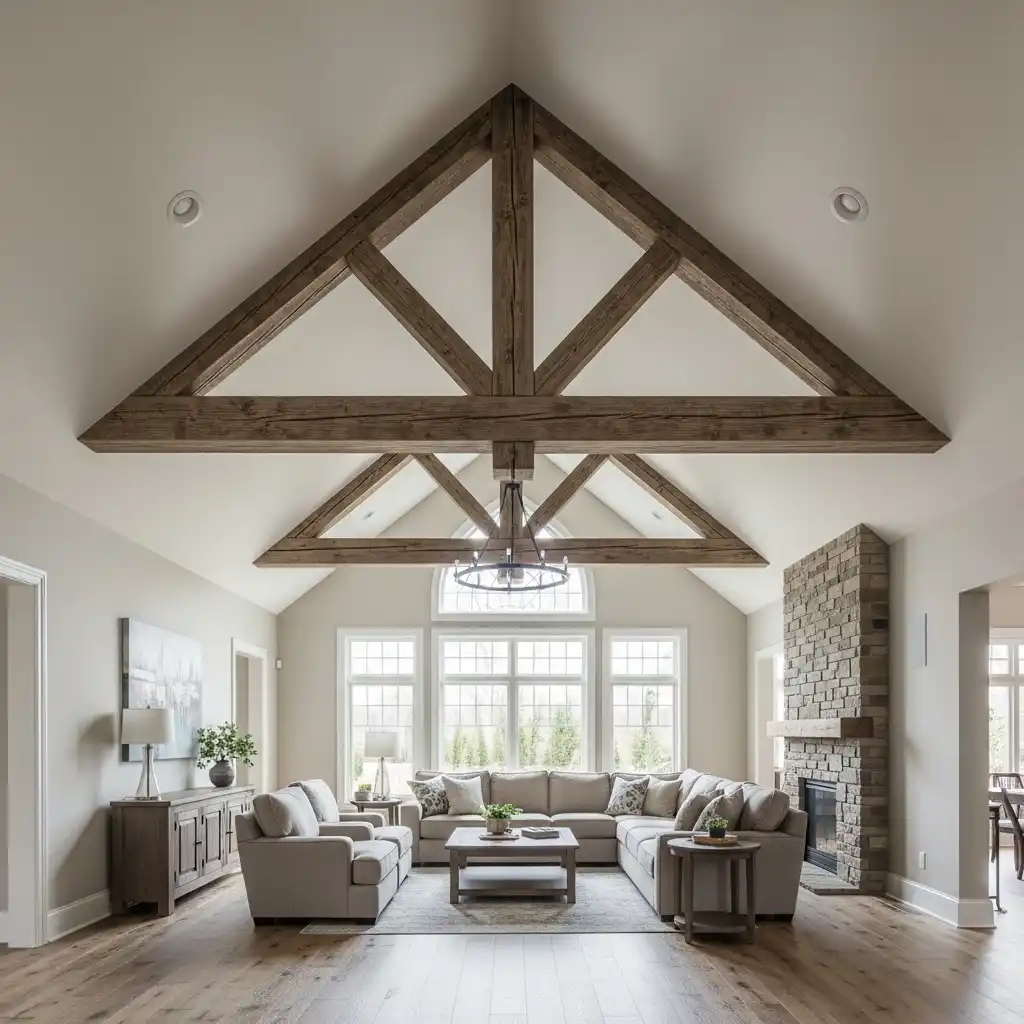
Create a decorative A-frame structure by running a beam horizontally across the room, connecting the two angled ceiling planes. This classic truss pattern visually lowers the ceiling while adding spectacular drama.
Exposed Hardware
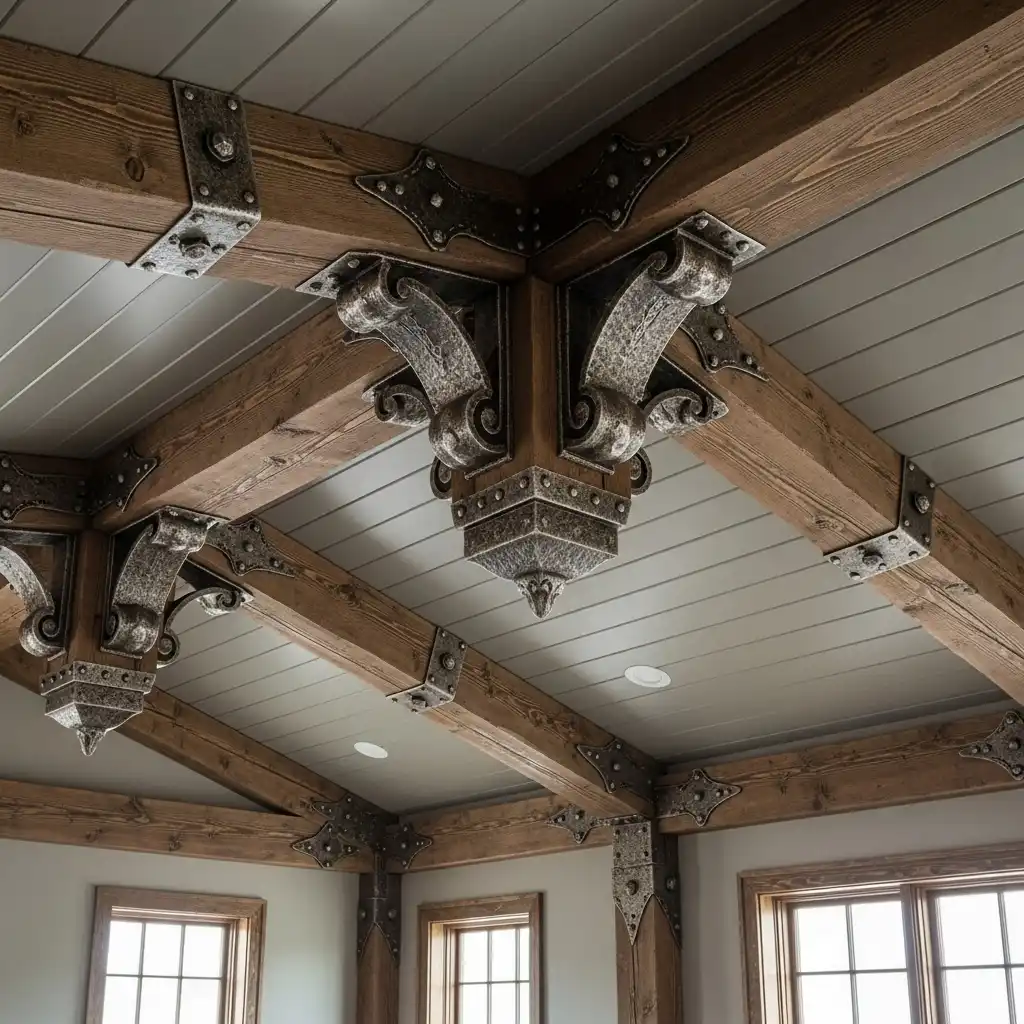
Enhance the rustic authenticity by adding decorative metal brackets or straps to the beam ends or joints.
Driftwood Finish
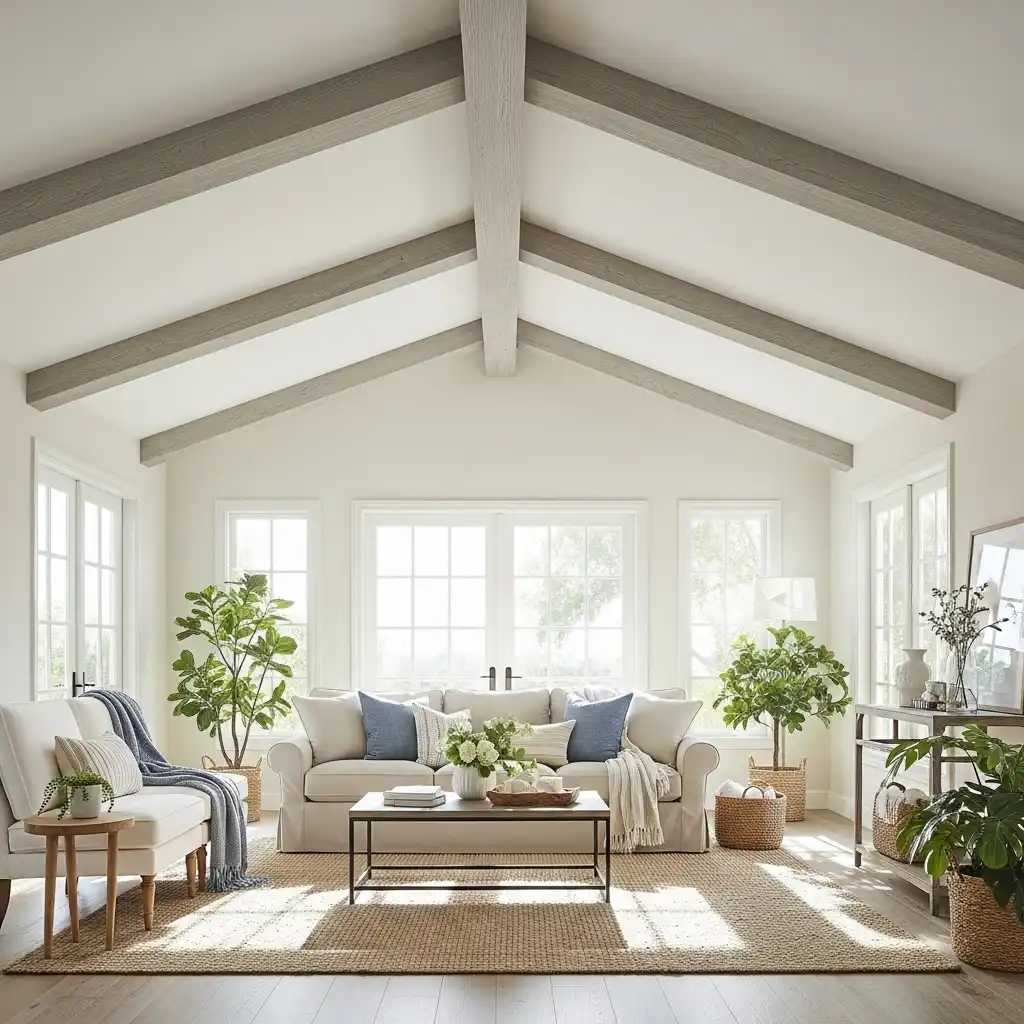
A lighter, grey-washed finish offers a coastal farmhouse vibe, perfect for sun-drenched homes in places like Los Angeles.
Modern & Minimalist Styles
Clean, Squared Lines

Opt for smooth, non-textured faux beams with sharp, squared edges. This aligns with contemporary and Mid-Century Modern aesthetics.
Monochromatic Placement
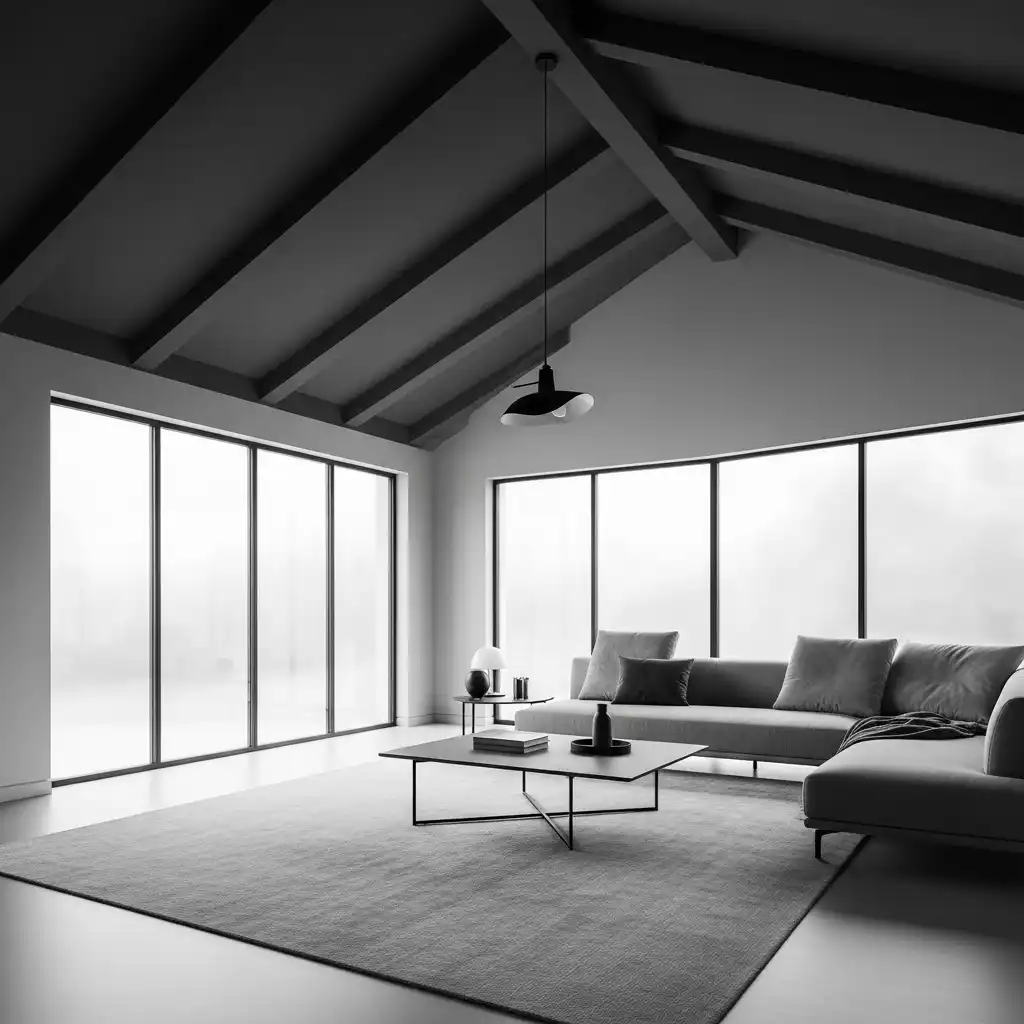
Install beams painted the exact same color (like crisp white or deep charcoal) as the ceiling to create subtle texture and dimension without harsh contrast.
Geometric Grid
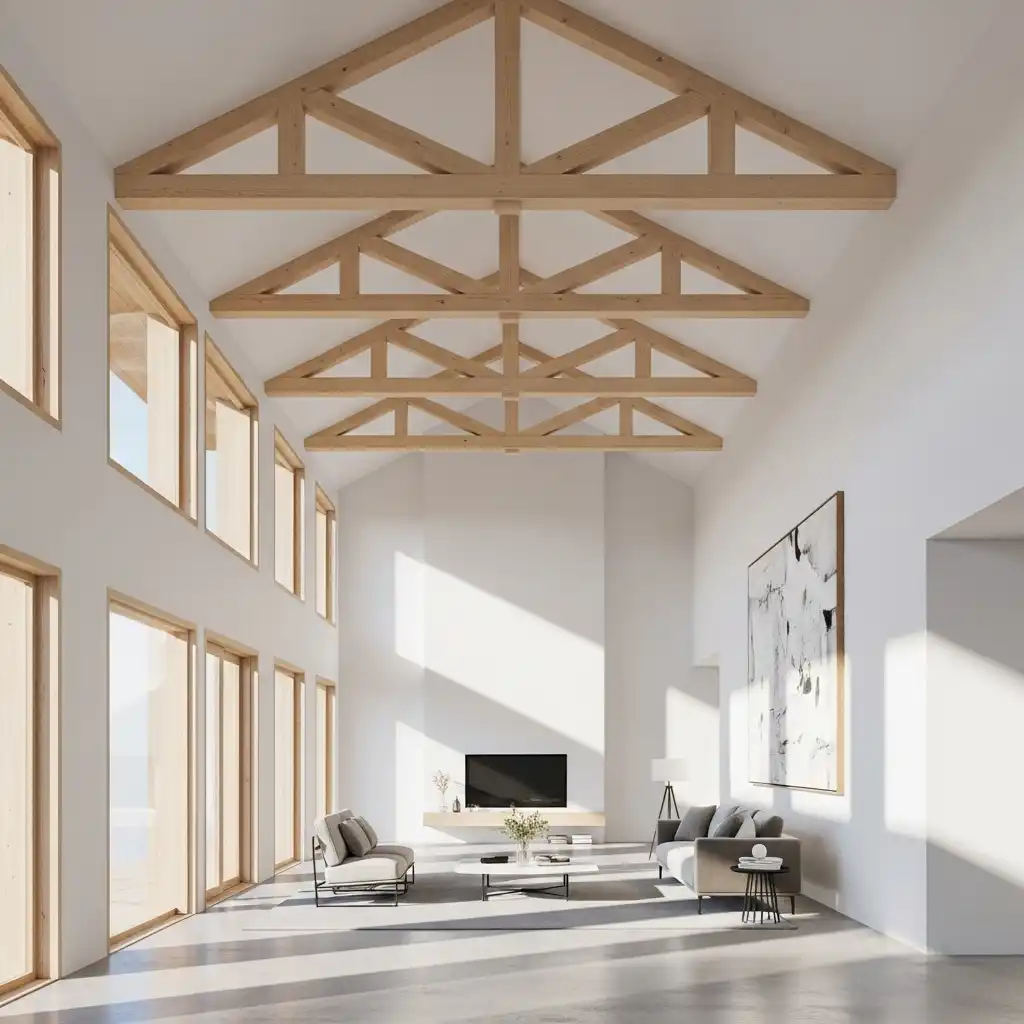
In a large, sprawling vaulted space, use multiple intersecting beams to create a symmetrical grid pattern, which adds an element of structured, modern design.
The Floating Look
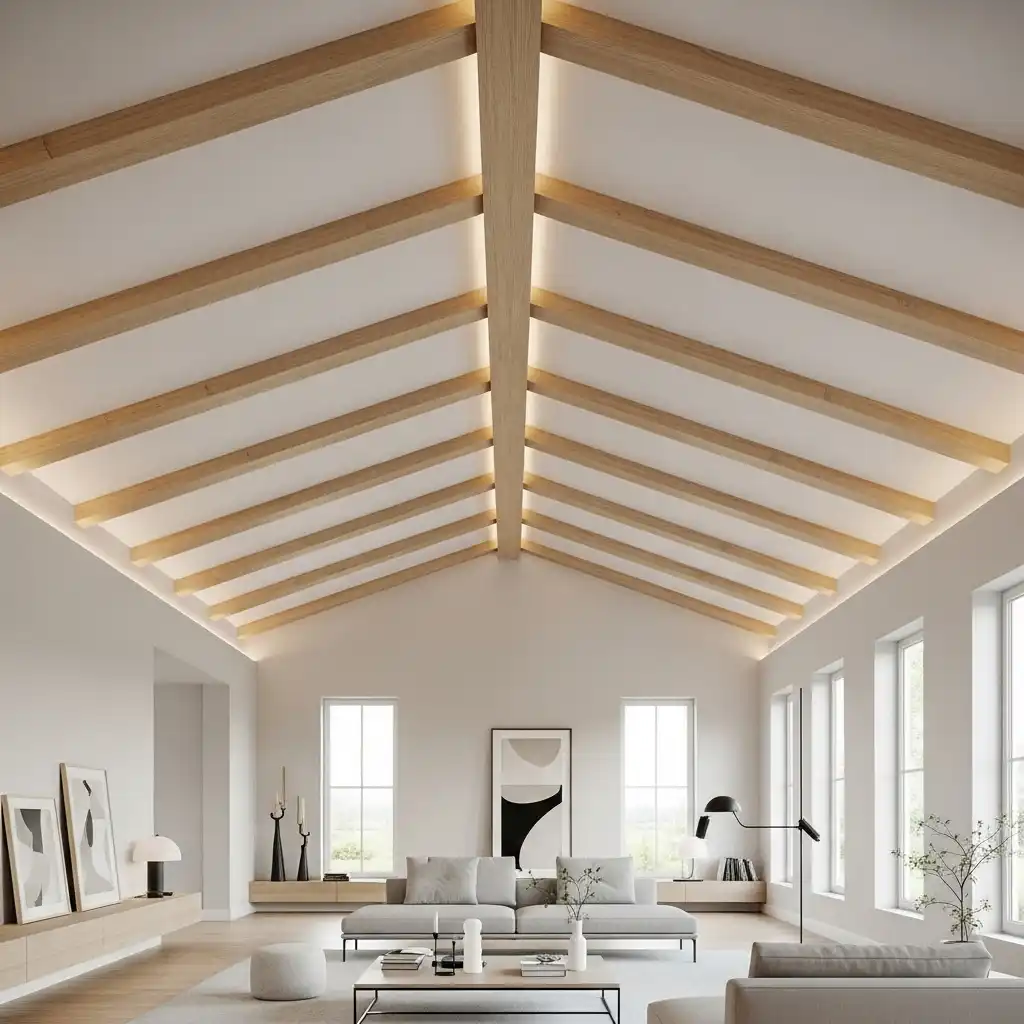
Install beams horizontally (not following the pitch) with a slight space between the beam and the ceiling to give the illusion of a lighter, floating structure.
Sleek Black Statement
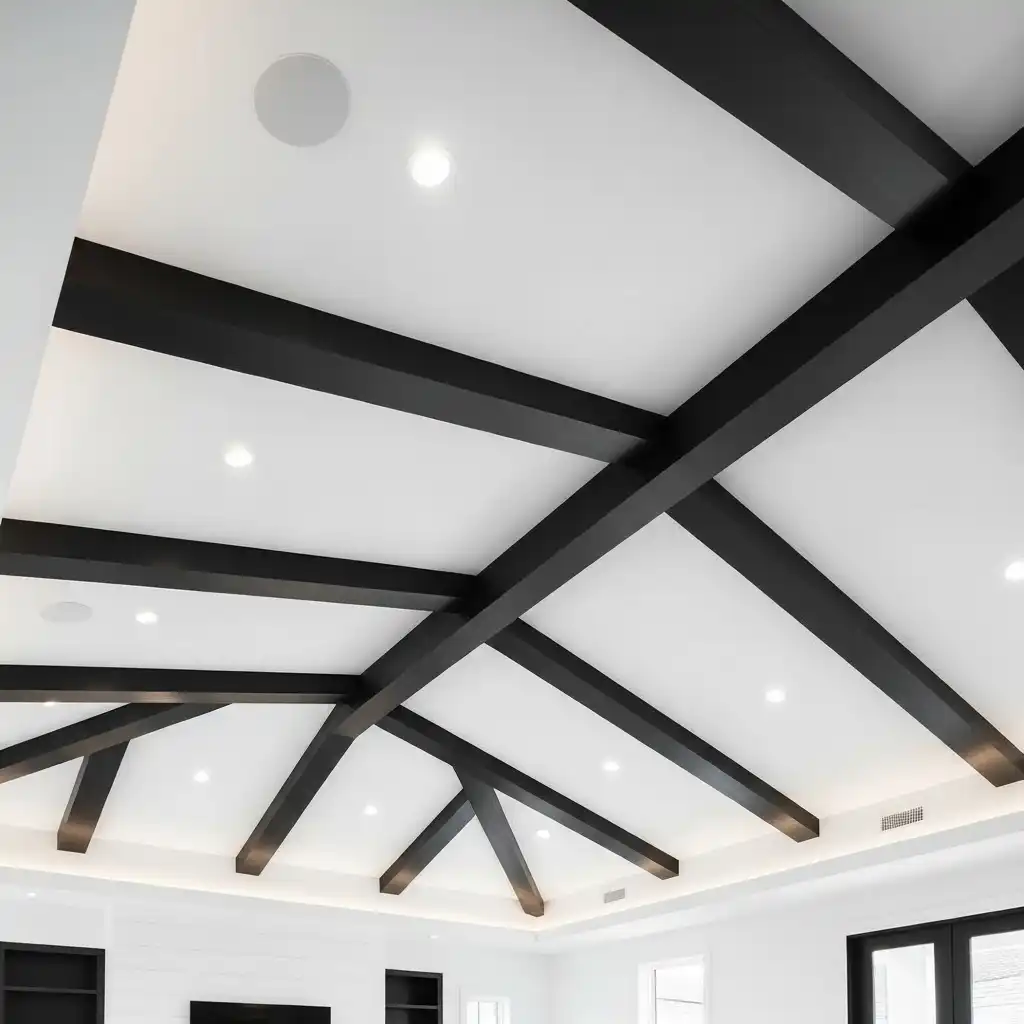
Use matte black beams on a bright white ceiling for a bold, graphic, and ultra-modern focal point.
Recessed Lighting Integration
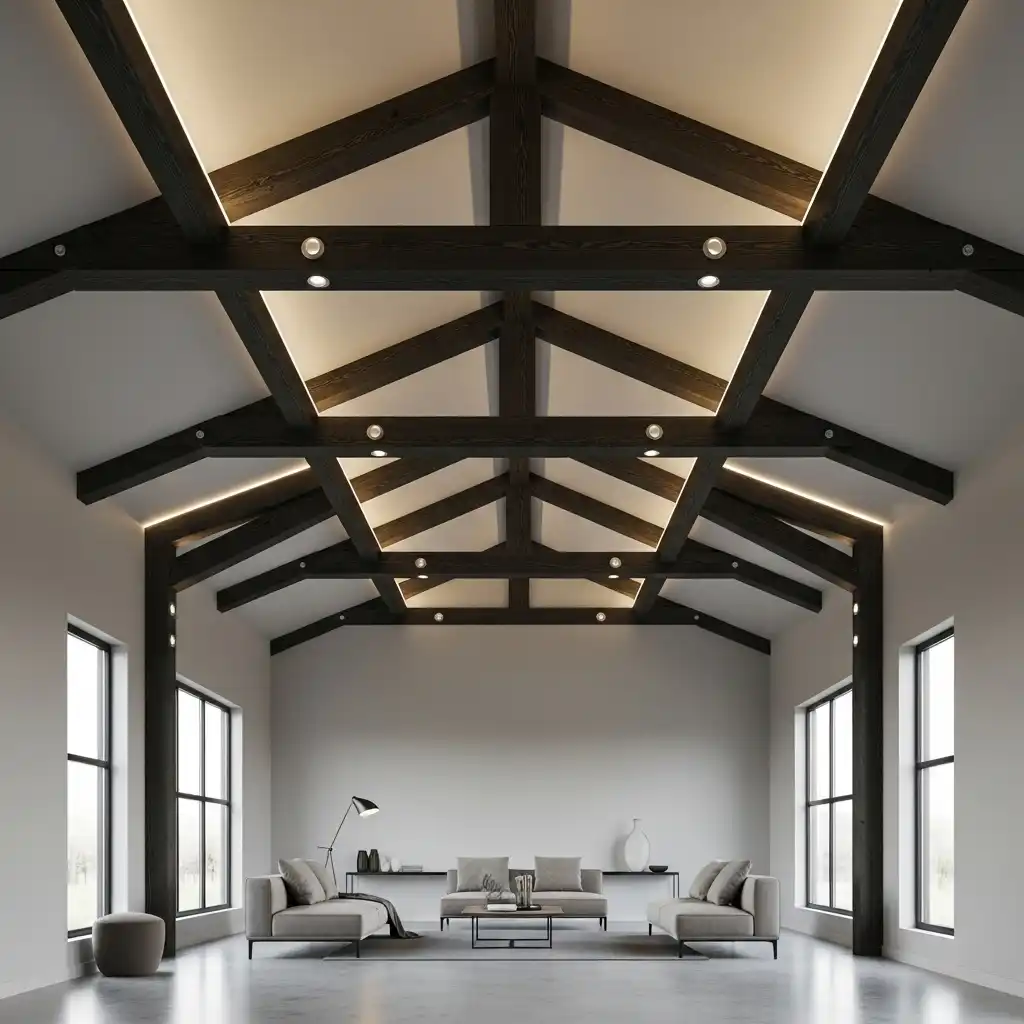
Install beams that are deep enough to discreetly conceal LED strip lighting or can be used to mount recessed spotlights, keeping the look sleek and functional. This is a great solution for maximizing light in a high vault.
Creative & Unique Patterns
V-Pattern Installation
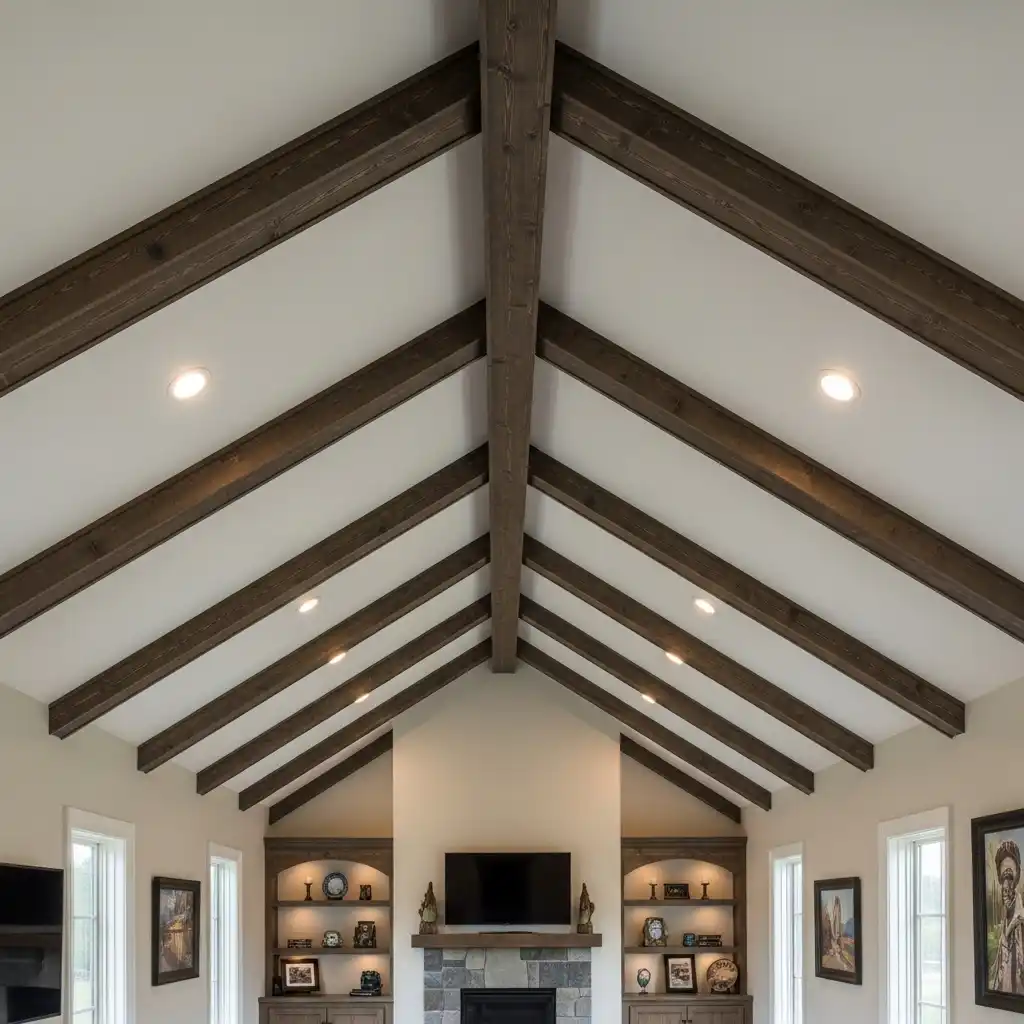
Arrange smaller beams in a repeating ‘V’ pattern along the slope, drawing the eye upward from the walls toward the central ridge.
Accent Wall Extension
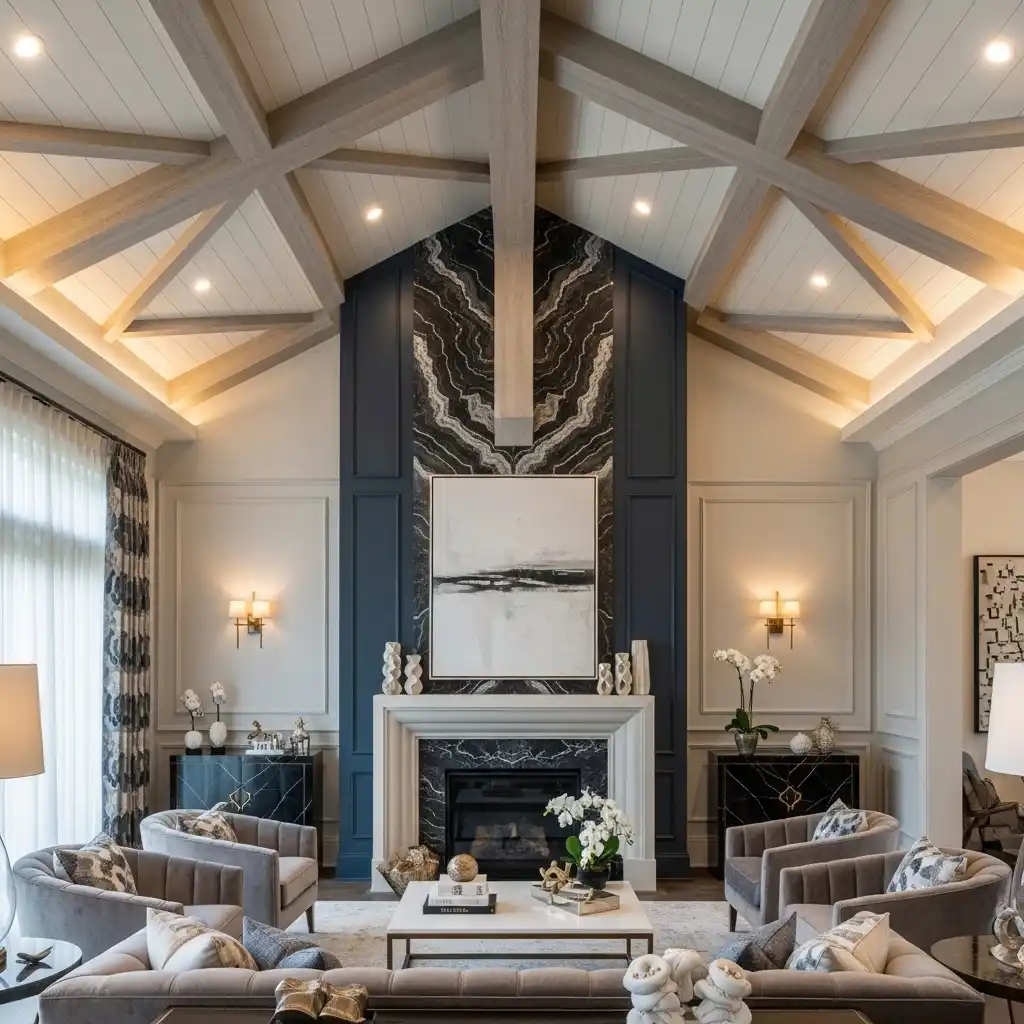
Use a beam to visually divide the room and extend the ceiling line down one wall, framing a fireplace or a large entertainment center.
Perpendicular Spacing
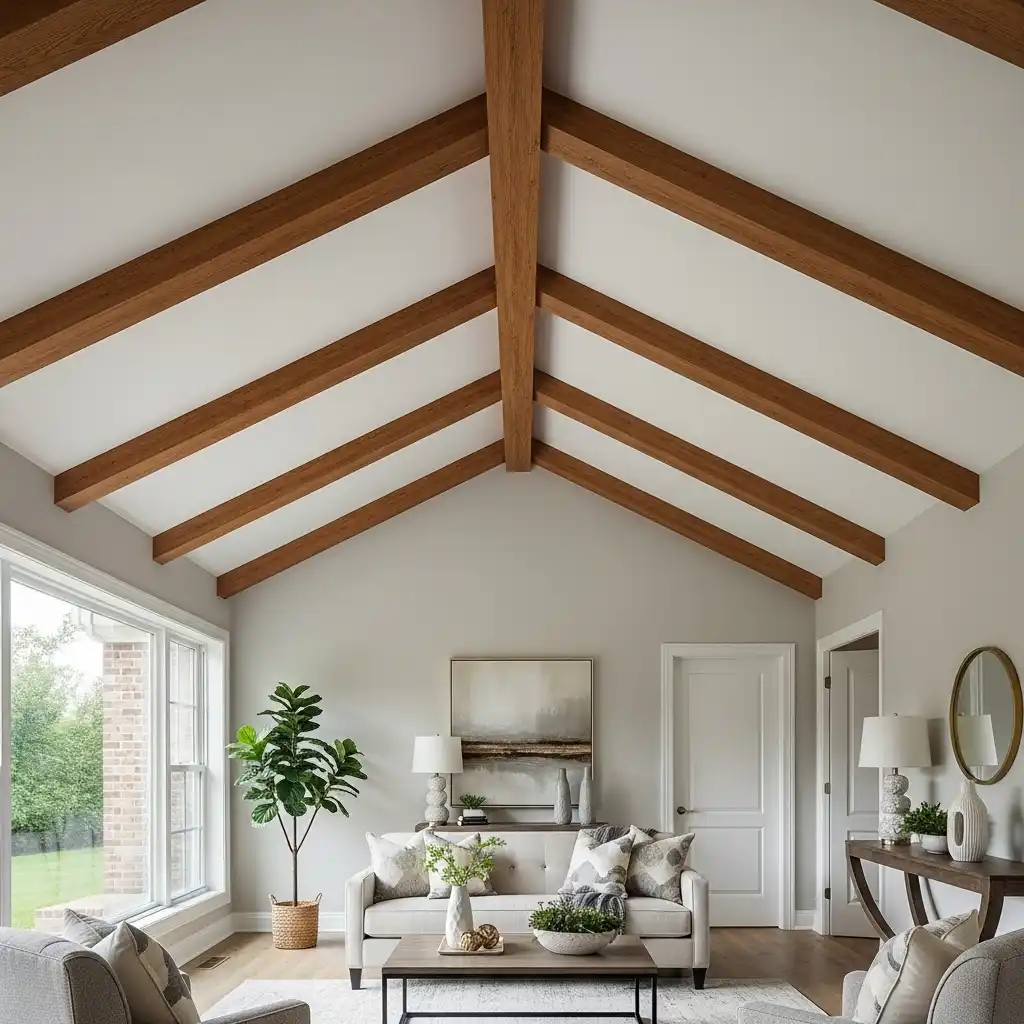
Instead of following the pitch, install beams straight across the room, perpendicular to the main ridge beam, to mimic exposed rafters. Spacing them 4 to 8 feet apart is a common and balanced approach.
Two-Tone Staining
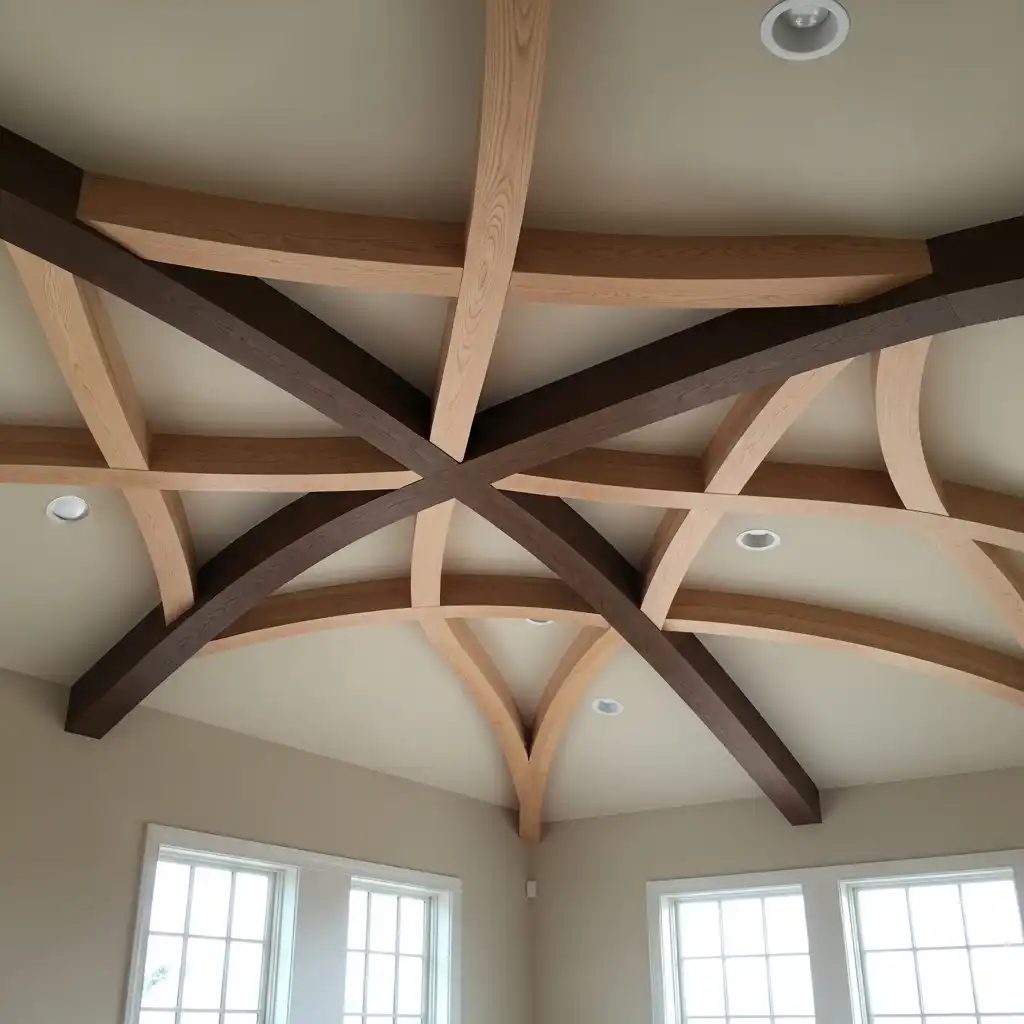
Use two complementary stains on the same beam (a darker inner face, a lighter outer face) to add depth and a unique custom look.
Curved or Arched Beams
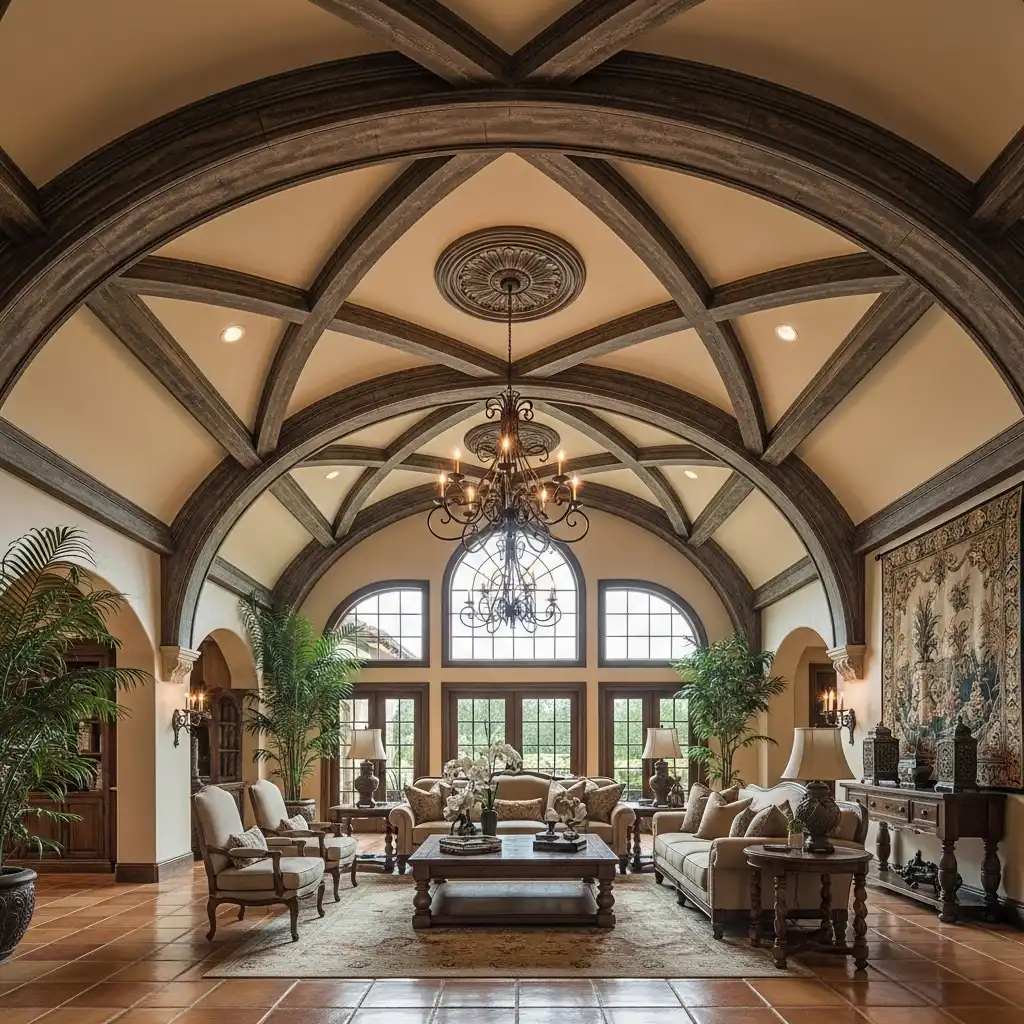
For a grand European or Mediterranean-inspired home, use specially manufactured faux beams to create a graceful, arched truss look.
Custom Stencil/Wrap
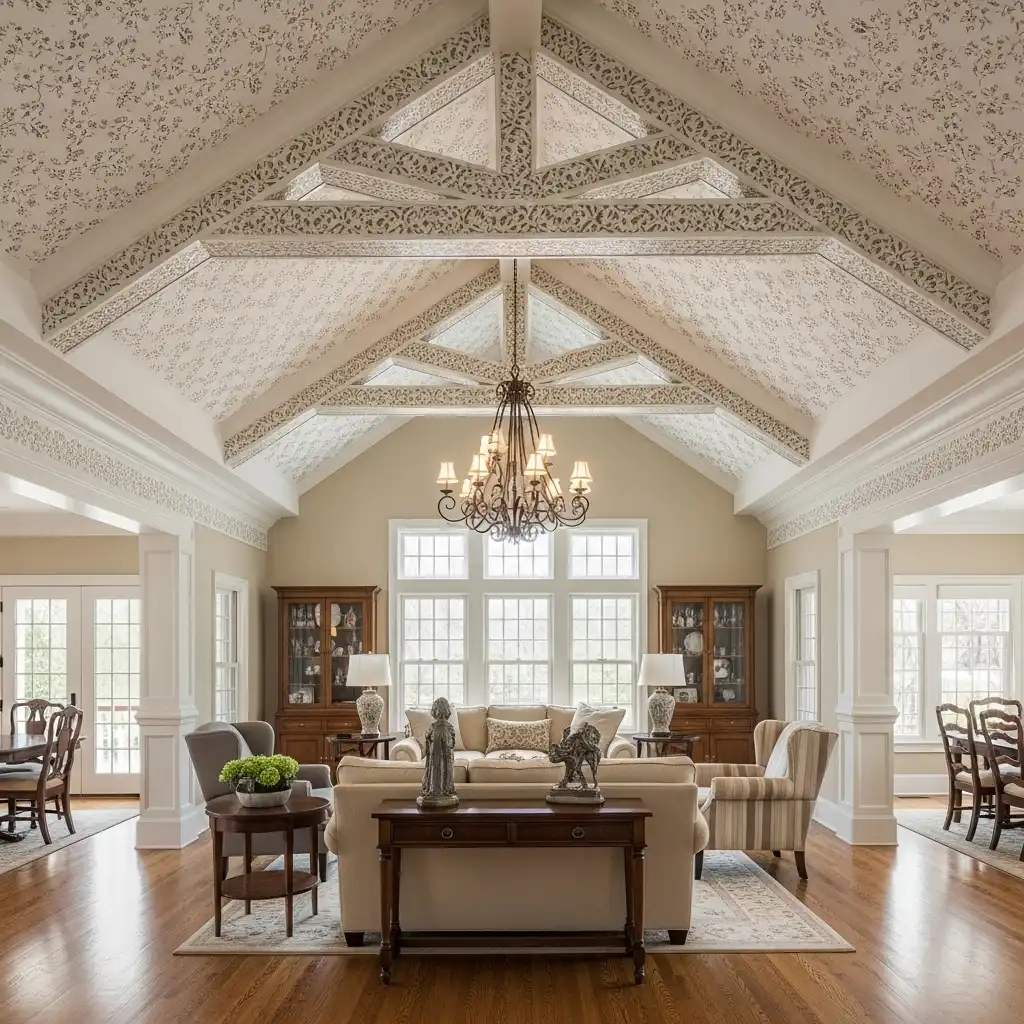
For a truly unique touch, consider wrapping unfinished beams in wallpaper or applying a subtle stencil pattern before installation to personalize the design.
Budget & Installation Insights
Faux beams, particularly those made from polyurethane, are incredibly lightweight, making them a popular DIY installation project for American homeowners, especially in high-ceilinged rooms where heavy lifting is a concern.
Material Cost: Polyurethane beams typically range from $15 to $25 per linear foot. This cost is significantly less than that of real reclaimed wood, which can be $25-$50+ per linear foot.
DIY vs. Pro Installation: A DIY approach can save the average $40 to $100 per hour labor cost of a carpenter, making the project much more budget-friendly. Polyurethane materials are light enough to install with construction adhesive and a few screws.
Where to Purchase: Faux wood beams are readily available at major home improvement retailers nationwide, including The Home Depot and Lowe’s, as well as specialty distributors who can often customize the length and finish.
Conclusion: Structural Style Made Simple
Faux beams on a vaulted ceiling offer a powerful way to inject character, warmth, and architectural detail into an otherwise expansive space. Whether you aim for the classic charm of a Charlotte farmhouse or the polished look of a Seattle-Tacoma modern home, the faux beam solution provides an elegant, affordable, and lightweight way to redefine your vaulted space. The versatility of polyurethane materials allows for complex patterns like trusses or grids, delivering maximum design impact with minimal structural hassle.
For more ceiling inspiration, see our article: Guide to Ceiling Beams Living Room.
Frequently Asked Questions (FAQs)
What is the best spacing for faux beams on a vaulted ceiling?
The most common spacing for beams is typically between 4 and 8 feet apart. For high vaults, using fewer, thicker beams provides a grander scale, while smaller vaults benefit from a greater number of narrower beams spaced closer together (around 3 to 4 feet) to create a cozier, raftered effect.
Are faux wood beams suitable for damp climates?
Yes. Faux beams made from polyurethane are highly resistant to moisture, warping, cracking, and rot, making them an excellent choice for homes in humid regions or areas like Arizona where temperature fluctuations are common, unlike real wood which requires more maintenance.
Can I run electrical wiring through my faux beams?
Yes, this is one of the greatest functional advantages of faux beams. Since they are hollow, you can easily run electrical wiring through them to install recessed lighting, decorative chandeliers, or ceiling fans, creating a beautiful and clean finish.




